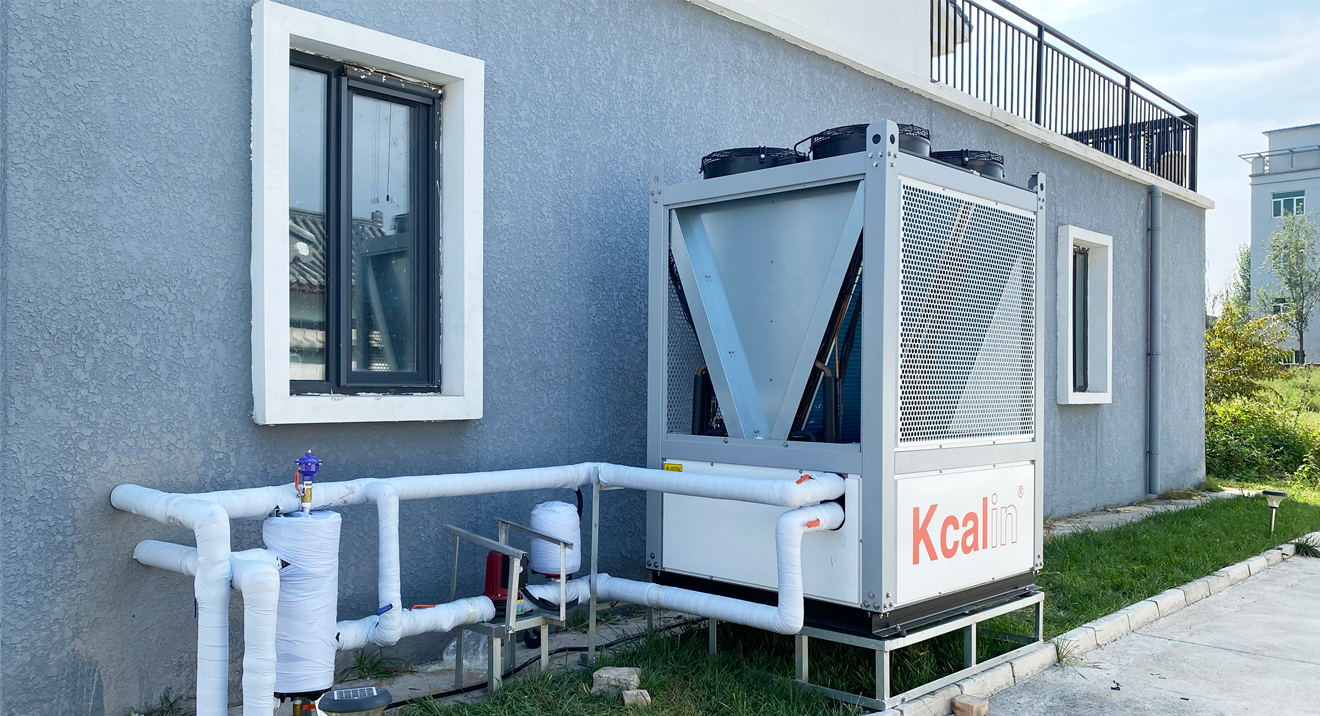In today's energy environment, finding more effective heating and cooling solutions is crucial. Heat pump technology has attracted widespread attention in this field, and air-cooled heat pumps and air source heat pumps are two popular choices. Today, Kcalin will provide a detailed introduction to the differences between air-cooled heat pumps and air source heat pumps, as well as their respective application scenarios.
Before exploring the differences between air-cooled heat pumps and air source heat pumps, let's first understand their basic principles.
Air cooled heat pump: An air cooled heat pump is a heat pump system that utilizes external air to provide heating and cooling through the process of evaporative cooling and condensation heating. It uses a fan to blow external air through the evaporator to absorb heat, and then heats up the hot air through a compressor for heating or cooling.
Air source heat pump: An air source heat pump is also a heat pump system that absorbs heat from external air and then heats up the hot air through a compressor. The difference is that air source heat pumps usually do not blow air through fans, but directly absorb heat through heat exchangers.
Difference 1: Application scenario
Air cooled heat pumps and air source heat pumps have their respective advantages in different application scenarios.

Applicable scenarios for air-cooled heat pumps: air-cooled heat pumps typically perform well in small and household applications, such as home heating, small commercial buildings, or independent offices. They are usually more suitable for mild climate conditions, as efficiency may decrease in extremely cold or hot environments.
Application scenarios of air source heat pumps: Air source heat pumps are usually more suitable for large commercial buildings, multi household residential buildings, and industrial facilities. They can provide efficient heating and cooling under different climatic conditions, especially in cold winter and hot summer.
Difference 2: Efficiency and performance
Efficiency of air-cooled heat pumps: The efficiency of air-cooled heat pumps is influenced by external environmental temperature. In cooling mode, its cooling efficiency is usually higher when the external temperature increases. However, in heating mode, its heating efficiency may decrease when the temperature decreases.
Air source heat pump efficiency: Air source heat pumps perform well over a wider temperature range, as they typically have high-efficiency compressors and more intelligent control systems. This enables them to provide stable performance under different climatic conditions.
Difference 3: Installation and maintenance costs
Cost of air-cooled heat pumps: Due to their small scale and simplified installation requirements, air-cooled heat pumps typically have lower initial installation costs. In addition, maintenance costs are usually lower.
Cost of air source heat pumps: The initial installation cost of air source heat pumps is usually higher, especially for large systems. However, their energy efficiency is usually higher and can bring more energy conservation and cost savings in the long run.
Air cooled heat pump and air source heat pump are two heat pump systems with their respective advantages, suitable for different application scenarios. The choice of system depends on project requirements, climate conditions, and budget. Before making a decision, it is recommended to consult professional technical personnel to choose a solution that suits your heating and cooling needs. No matter which system you choose, you should focus on energy efficiency, environmental protection, and maintenance to ensure long-term sustainability and performance.







Comment